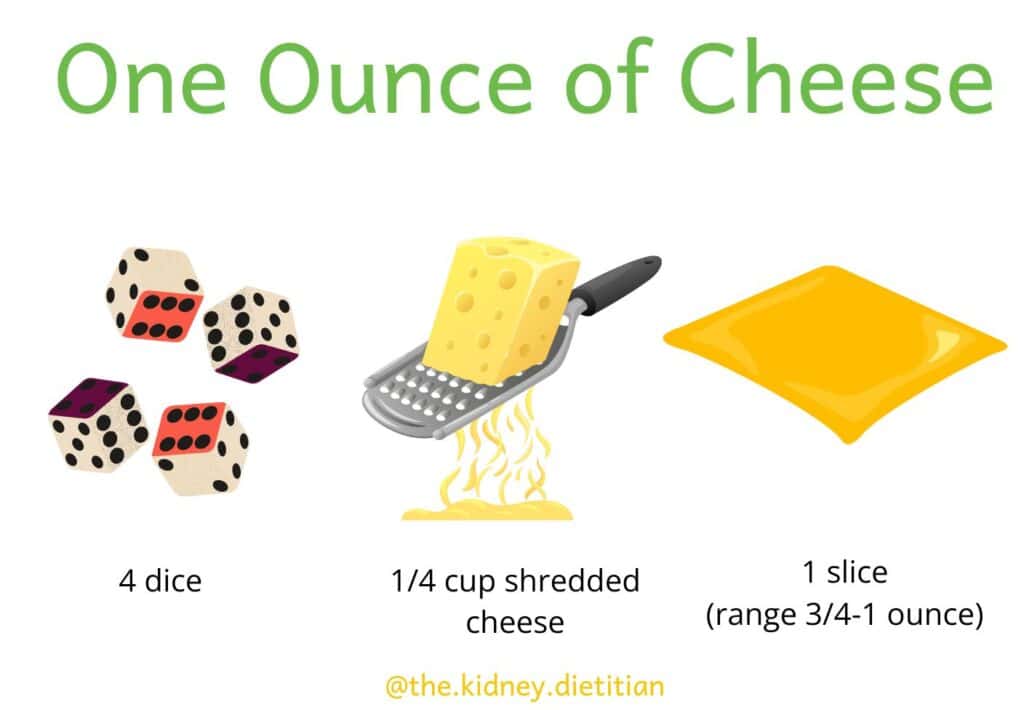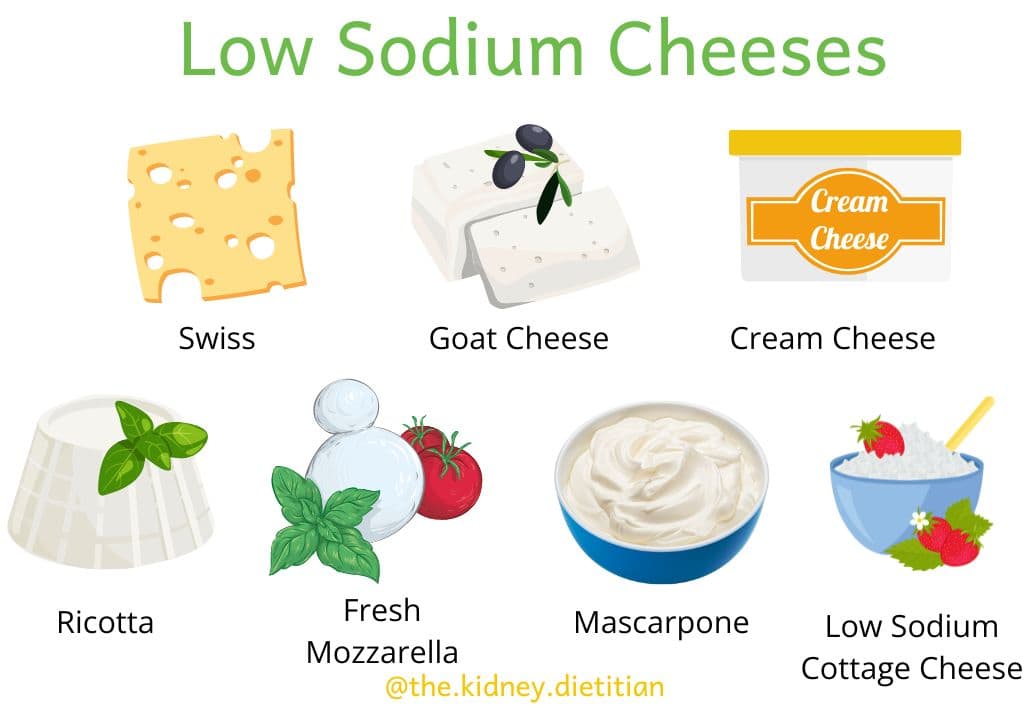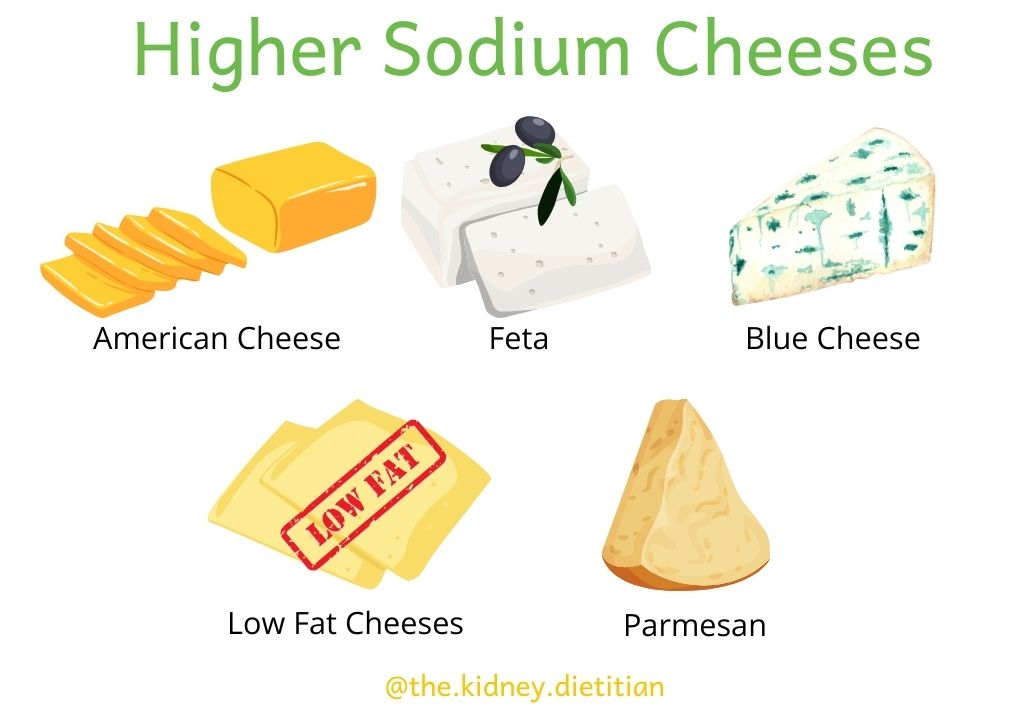Who doesn’t love cheese? Whether it is on a burger, pasta or as meal all by itself, cheese always finds a way to be the star of the show. In my book, at least! But, cheese can be pretty high in sodium. Never fear cheese lovers! There are tons of delicious low sodium cheese options out there for any low sodium diet.
*Please note that this post contains clearly identified affiliate links. As an Amazon affiliate, I may earn a small commission on qualifying purchases (at no extra cost to you).
Sodium & Health
Sodium is a big deal when it comes to health. Eating too much salt can cause high blood pressure, heart disease, stroke, kidney disease and kidney stones.
Plus, most of us are eating way more salt than we need. The average American eats around 3,400mg of sodium each day. Compare this to the recommended amount of 2,300mg per day by the Dietary Guidelines for Americans. This is 50% more salt that we should be eating!
Most of the salt we eat is already IN our food, like cheese, salad dressing, processed meat and other convenience foods. To really eat less salt, it is important to choose foods lower in salt in the first place! Simply throwing away the salt shaker won’t cut it for most people. In fact, it is 100% ok to add some salt to your food if you are eating mostly low sodium foods like fruits, vegetables, legumes and whole grains.
Sodium in Cheese
Cheese is notoriously high in sodium. But, there are huge differences in the amount of sodium in different kinds of cheese.
One ounce of cheddar cheese has about 180mg sodium. Compare this to an ounce of feta with 320mg of sodium. Although both of these yummy cheeses can absolutely fit in a low sodium diet, cheddar clearly uses up less of your sodium “budget” for the day compared to feta.
It is important to note that sodium in cheese is different by brand, even for the same type of cheese. Always remember to read the Nutrition Facts Label for sodium on whatever cheese you buy!

Is Cheese Healthy?
Of course, there are lots of factors to consider to make a food healthy overall. Other than sodium, the most notable nutrients in cheese are calcium, cholesterol, protein and saturated fat.
Calcium
Cheese is a fantastic source of calcium! One ounce of cheddar has about 200mg calcium – nearly the amount in a cup of milk!
Eating enough calcium can help keep our bones healthy and is also imperative to help prevent oxalate kidney stones.
Saturated Fat & Cholesterol
Most animal foods have some saturated fat and cholesterol in them. One ounce of cheddar has 5mg saturated fat and 28mg cholesterol. Of note, how much saturated fat you eat tends to have a much bigger impact on blood cholesterol levels than eating cholesterol itself.
Cheese isn’t especially high in cholesterol, but does have a fair amount of saturated fat. Cheese can absolutely fit within the recommended intakes of saturated fat by the American Heart Association of about 13mg saturated fat per day (depending on your calorie intake). If high cholesterol or heart health is a concern, be sure to eat plenty of fiber from lots of whole grains, fruits and veggies!
Protein
Cheese also has a fair amount of protein! One ounce of cheddar has about 7 grams.
Phosphorus
Most people with chronic kidney disease should be mindful of how much potassium they eat – especially from non-plant foods, such as cheese because our bodies absorb a lot more phosphorus from processed and animal foods compared to plant foods. Learn more about phosphorus in cheese.
If you do not have kidney disease, the phosphorus in cheese is likely not a concern.
Overall, cheese is absolutely a healthy food when eaten as part of a healthy balanced diet. Ask your dietitian what is right for you. The table below offers a nutritional comparison of some common cheeses!
Table: Sodium Comparison of Different Kinds of Cheese
Top 8 Low Sodium Cheese Choices
Here are my favorite low sodium cheeses!
Swiss Cheese
The classic low sodium cheese. Swiss cheese* only has 57mg sodium per ounce.
Swiss cheese adds that classic creaminess and funk to sandwiches, salads and other cheesy goodness.

Goat Cheese
My personal favorite, goat cheese* only has Xmg sodium per ounce.
Goat cheese is scrumptious spread on toast or crumbled over your favorite salad.
Cream Cheese
Surprise! That cream cheese you use on bagels is a wonderful low sodium cheese too! Two tablespoons of cream cheese* only has Xmg sodium. Cream cheese is a marvelous way to add creaminess to any dish.
Watch out for veggie or other flavored cream cheese varieties. These tend to have more sodium (or sugar!) than plain cream cheese.
Ricotta Cheese
Classically used in lasagna, ricotta* is very low in sodium with only Xmg sodium per 2 tablespoons. Ricotta is a great substitute for cottage cheese in recipes. Or, is delicious on toast, crackers and my favorite, grilled peaches!
Ricotta is usually available made with whole* or skim* milk. Both are wonderful low sodium cheese options.
Fresh Mozzarella
Yum! Light, fluffy fresh mozzarella* is low in sodium too! One ounce has 65mg sodium. The usual brick mozzarella cheese has 140mg sodium.
Fresh mozzarella is an amazing low sodium pizza topping or a great protein source for a vegetarian sandwich.
Mascarpone Cheese
Traditionally used in tiramisu or other creamy desserts, mascarpone* can add something to more than desserts. Two tablespoons has Xmg sodium.
Mascarpone cheese is especially high in fat, making is extra creamy! Just a little goes a long way. Add a dollop at the end of cooking soups or sauces for some heft and creaminess.
Low Sodium Cottage Cheese
Cottage cheese is actually pretty high in sodium. But, low sodium cottage cheese does exist! It can be hard to find, but the internet helps make it more accessible if your local grocery store doesn’t have it.
You can make your own own Low Sodium Cottage Cheese easily at home!
Farmer’s Cheese
Farmer’s Cheese is a lot like cottage cheese, but without the salt! If your local grocery store doesn’t have “low sodium” or “no salt added” cottage cheese, look for Farmer’s Cheese as an excellent substitute!
High Sodium Cheese
Some cheeses are especially high in sodium. Here are some to watch out for.
American Cheese
American cheese tends to be higher in both sodium and saturated fat compared to other cheeses. In fact, most American cheese isn’t really “cheese”. It is “processed cheese food product” because it doesn’t meet the standard of identity for cheese established by the Food & Drug Administration.
One slice of American cheese has 256mg sodium and 3mg saturated fat.

Feta, Blue & Parmesan Cheese
All of these cheeses are pretty high in sodium. One ounce of feta cheese has Xmg sodium. Blue cheese has Xmg and parmesan cheese has Xmg.
However, all of these cheese pack QUITE the punch of flavor. You likely don’t need to add as much blue cheese as you would colby cheese, for example.
In fact, this dietitian is a big fan of adding a little of these flavor-boosting cheeses if you love them. This could actually save you sodium in the long run by adding a ton of flavor for the sodium.
Low Fat Cheese
In general, the low fat version of a cheese has more sodium. For example, one ounce of cheddar cheese has 180mg sodium. Compare this to low-fat cheddar that has nearly 250mg.
Fat helps our food taste good. Sodium and sugar taste good too. Often one of these ingredients is added to food when the other is reduced. Low fat peanut butter also tends to be higher in sodium!
Of course, this doesn’t mean that you should never choose low fat cheese. Low fat cheese also tends to be lower in saturated fat, which can contribute to higher cholesterol levels. The best cheese for you will depend on your health goals, and the other foods you eat throughout the day.
The Bottom Line
Ultimately, the right cheese for you depends on your health goals, medical history, your entire dietary pattern and most importantly, the cheese you like!
Remember that any low sodium cheese can become a high sodium cheese if you eat enough of it. Also, a high sodium cheese can be a low sodium cheese if you use a small amount.
ANY cheese can fit in a healthy diet. The key to low sodium nutrition is how much salt you eat throughout the day – not in one sitting or from a single food, like cheese.
Ask your dietitian what cheeses and how much is right for you!
Happy Eating!
Melanie
- The Renal Warrior Project. Join Now
- Source: https://www.thekidneydietitian.org/low-sodium-cheese/
